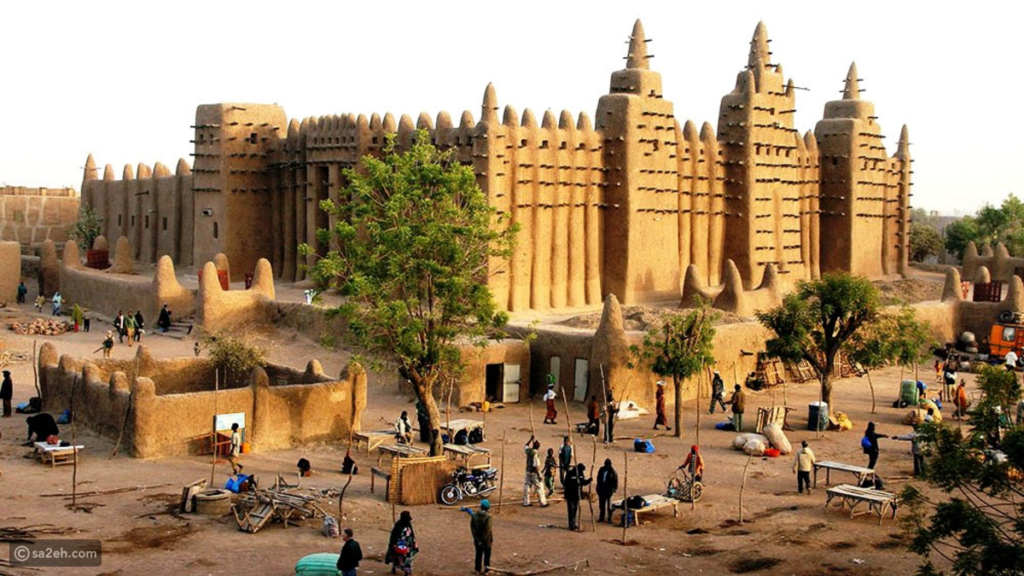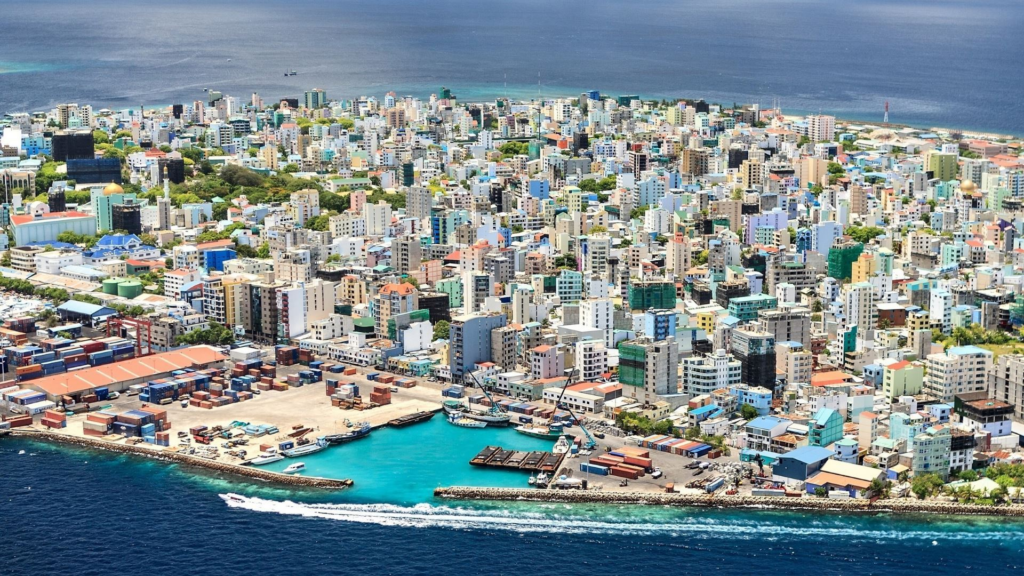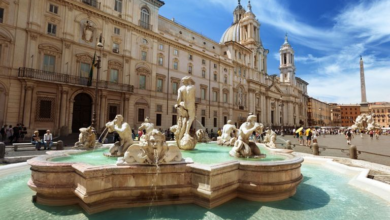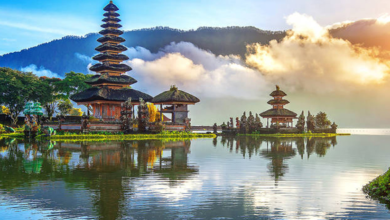The most important tourist attractions in Mali

Mali is a country in West Africa that is known for its vibrant culture, beautiful landscapes, and rich history. Here are some of the most important tourist attractions in Mali:
- Timbuktu: Timbuktu is an ancient city in northern Mali that was once a major center of Islamic learning and trade. The city is known for its beautiful mosques and madrasas, as well as its historic libraries and collections of ancient manuscripts.
- Djenné: Djenné is a historic town in central Mali that is known for its beautiful mud-brick architecture, including the Great Mosque of Djenné, which is the largest mud-brick building in the world. The town is also home to a vibrant market and a number of traditional festivals and ceremonies.
- Dogon Country: Dogon Country is a region in central Mali that is known for its beautiful landscapes, including the Bandiagara Escarpment, a UNESCO World Heritage Site. The region is also home to the Dogon people, who are known for their unique culture and traditional way of life.
- Tomb of Askia: The Tomb of Askia is a historic site in Gao, northern Mali, that is the burial place of Askia Mohammed, the founder of the Askia dynasty. The tomb is a beautiful example of Sudano-Sahelian architecture and is a UNESCO World Heritage Site.
- Mopti: Mopti is a lively town in central Mali that is known for its bustling port and markets. The town is also home to a number of historic mosques and traditional mud-brick architecture.
- Festival in the Desert: The Festival in the Desert is an annual music festival that takes place near Timbuktu and is a celebration of the Tuareg and other nomadic cultures of the Sahara. The festival features traditional music and dance, as well as contemporary African and world music.
- Bamako: Bamako is the capital city of Mali and is a vibrant and bustling metropolis that is home to a number of museums, markets, and cultural institutions. The city is known for its lively music scene and is a great place to experience modern Malian culture.
- National Museum of Mali: The National Museum of Mali is located in Bamako and is one of the most important cultural institutions in the country. The museum features exhibits on Malian history, culture, and art and is a great place to learn more about the country’s rich heritage.
- Ségou: Ségou is a historic town in central Mali that is known for its beautiful colonial architecture and traditional crafts. The town is also home to a number of cultural festivals and events throughout the year.
- Gao: Gao is a historic city in northern Mali that was once an important center of learning and trade. The city is known for its beautiful mosques and traditional mud-brick architecture, as well as its lively markets and festivals.\

These are just a few examples of the many important tourist attractions in Mali. With its rich history, vibrant culture, and beautiful landscapes, Mali is a fascinating destination for travelers.
- Mount Hombori: Mount Hombori is the highest peak in Mali and is located in the Hombori region, in the central part of the country. The mountain is a popular destination for hiking and climbing, and offers stunning views of the surrounding landscape.
- Lake Débo: Lake Débo is a large lake located in the northwestern part of Mali, near the border with Mauritania. The lake is a popular destination for birdwatching and fishing and is home to a number of unique species of fish and birds.
- Boucle du Baoulé National Park: Boucle du Baoulé National Park is a nature reserve located in the southwestern part of Mali, near the border with Guinea. The park is home to a number of unique species of wildlife, including chimpanzees, crocodiles, and hippos.
- Gourma-Rharous National Park: Gourma-Rharous National Park is a nature reserve located in the eastern part of Mali, near the border with Burkina Faso. The park is home to a number of unique species of wildlife, including elephants, lions, and cheetahs.
- Sankoré Madrasah: The Sankoré Madrasah is a historic Islamic school located in Timbuktu. The school was founded in the 14th century and was once one of the most important centers of Islamic learning in Africa.
- Kidal: Kidal is a town located in the northeastern part of Mali, near the border with Algeria. The town is known for its beautiful architecture and traditional crafts, and is home to a number of historic mosques and tombs.
- Taoudenni: Taoudenni is a town located in the northern part of Mali, near the border with Algeria. The town is known for its historic salt mines, which have been in operation for over a thousand years.
- Bamako Grand Mosque: The Bamako Grand Mosque is a beautiful mosque located in the heart of Bamako. The mosque is one of the largest in Mali and is known for its stunning architecture and intricate mosaics.
- Djenne-Djenno: Djenne-Djenno is an ancient city located in central Mali that was once a major center of trade and commerce. The city is known for its beautiful mud-brick architecture and is a UNESCO World Heritage Site.
- Festival sur le Niger: Festival sur le Niger is an annual music and arts festival that takes place in Ségou. The festival features a variety of traditional and contemporary music, as well as art exhibits, dance performances, and other cultural events.
These are just a few more examples of the many important tourist attractions in Mali. With its rich history, vibrant culture, and beautiful landscapes, Mali is a truly unique and fascinating destination for travelers.
- Ahmed Baba Institute: The Ahmed Baba Institute is a library and research center located in Timbuktu. The institute houses a collection of over 30,000 manuscripts, many of which date back to the 13th century and provide insight into the history and culture of West Africa.
- Grottes de Hombori: The Grottes de Hombori are a series of caves located near Mount Hombori. The caves contain ancient rock paintings and carvings from the Neolithic and Paleolithic eras, providing a glimpse into the prehistoric cultures of the region.
- Festival au Désert: Festival au Désert is a music festival that takes place in the Sahara Desert near Timbuktu. The festival features traditional Tuareg music as well as contemporary African and world music, and is a celebration of the nomadic cultures of the region.
- Bamako Craft Market: The Bamako Craft Market is a bustling market located in the heart of Bamako. The market sells a variety of traditional crafts, including pottery, textiles, jewelry, and wood carvings, and is a great place to find unique souvenirs and gifts.
- Koulikoro: Koulikoro is a town located on the banks of the Niger River, about 60 kilometers from Bamako. The town is known for its beautiful scenery and is a popular destination for hiking, fishing, and river cruises.
- Niger River: The Niger River is the third longest river in Africa and flows through several countries, including Mali. The river is an important source of water and transportation for the region, and is a popular destination for river cruises and fishing trips.
- Bandiagara Escarpment: The Bandiagara Escarpment is a sandstone cliff that runs for over 150 kilometers through central Mali, and is a UNESCO World Heritage Site. The escarpment is home to a number of traditional Dogon villages, which are known for their unique culture and architecture.
- Mopti Grand Mosque: The Mopti Grand Mosque is a beautiful mosque located in the town of Mopti. The mosque is known for its stunning architecture and is a popular destination for visitors to the region.
- Ségoukoro: Ségoukoro is a historic town located near Ségou, and is known for its beautiful colonial architecture and traditional crafts. The town is also home to a number of historic landmarks, including the Tomb of Biton Coulibaly and the Ségoukoro Fort.
- Sikasso: Sikasso is a town located in southern Mali, near the border with Côte d’Ivoire. The town is known for its beautiful scenery and is a popular destination for hiking and exploring the region’s forests and waterfalls.
These are just a few more examples of the many important tourist attractions in Mali. With its rich history, vibrant culture, and beautiful landscapes, Mali is a truly unique and fascinating destination for travelers.
- Siby: Siby is a town located about 40 km southwest of Bamako, and is known for its beautiful scenery and traditional crafts. The town is surrounded by hills and valleys, and is a popular destination for hiking, rock climbing, and exploring the region’s waterfalls and caves.
- Point G Hill: Point G Hill is a scenic viewpoint located on a hill in the outskirts of Bamako. The hill offers panoramic views of the city and the surrounding landscape, and is a popular destination for hiking and picnicking.
- Tomb of Soundiata Keita: The Tomb of Soundiata Keita is a historic site located in the town of Kangaba, about 100 km south of Bamako. Soundiata Keita was the founder of the Mali Empire in the 13th century, and the tomb is a tribute to his legacy and influence in West Africa.
- Gao Mosque: The Gao Mosque is a historic mosque located in the city of Gao, in northern Mali. The mosque was built in the 14th century and is known for its beautiful architecture and intricate decorations.
- Koutiala: Koutiala is a town located in southern Mali, near the border with Burkina Faso. The town is known for its vibrant market and traditional crafts, and is a great place to experience the local culture and way of life.
- Parc National de la Boucle du Baoulé: The Parc National de la Boucle du Baoulé is a nature reserve located in southwestern Mali, near the border with Guinea. The park is home to a variety of wildlife, including elephants, antelopes, and crocodiles, and is a popular destination for safari tours and wildlife viewing.
- Tomb of Askia: The Tomb of Askia is a historic site located in the city of Gao, in northern Mali. The tomb is a beautiful example of Sudano-Sahelian architecture and is a UNESCO World Heritage Site.
- Ténenkou: Ténenkou is a town located in central Mali, known for its traditional crafts and historic landmarks. The town is home to a number of historic mosques and tombs, including the Tomb of Fakoli Koroma, a 19th-century warrior and leader.
- Ménaka: Ménaka is a town located in eastern Mali, near the border with Niger. The town is known for its vibrant market and traditional crafts, and is a great place to experience the local culture and way of life.
- La Dune Rose: La Dune Rose, or the Pink Dune, is a picturesque sand dune located in the Sahara Desert, near the town of Timbuktu. The dune gets its name from its pinkish hue, which is caused by the reflection of the sunlight on the sand.
These are just a few more examples of the many important tourist attractions in Mali. With its rich history, vibrant culture, and beautiful landscapes, Mali is a truly unique and fascinating destination for traveler

- Tomb of Mohammed Askia: The Tomb of Mohammed Askia is a historic site located in the city of Gao, in northern Mali. Mohammed Askia was a ruler of the Songhai Empire in the 16th century, and the tomb is a tribute to his legacy and influence in West Africa.
- Timbuktu Manuscripts: The Timbuktu Manuscripts are a collection of ancient manuscripts that were discovered in Timbuktu in the 20th century. The manuscripts provide insight into the history and culture of West Africa, and are a testament to the region’s rich intellectual and artistic traditions.
- Goundam: Goundam is a town located in northern Mali, near the border with Mauritania. The town is known for its beautiful architecture and traditional crafts, and is home to a number of historic landmarks, including the Tomb of Almamy Ahmadou Lobbo.
- Falaise de Bandiagara: The Falaise de Bandiagara, or Bandiagara Escarpment, is a sandstone cliff that runs for over 150 km through central Mali. The escarpment is home to a number of traditional Dogon villages, which are known for their unique culture and architecture.
- Djenne Mosque: The Djenne Mosque is a historic mosque located in the town of Djenne in central Mali. The mosque was built in the 13th century and is one of the finest examples of Sudano-Sahelian architecture in West Africa.
- Kéniéba: Kéniéba is a town located in western Mali, near the border with Senegal. The town is known for its beautiful scenery and traditional crafts, and is a great place to experience the local culture and way of life.
- Tomb of Cheick Amadou: The Tomb of Cheick Amadou is a historic site located in the town of Ségou, in central Mali. Cheick Amadou was a 19th-century religious leader and the tomb is a tribute to his legacy and influence in West Africa.
- Koutammakou: Koutammakou is a cultural landscape located in northern Togo, near the border with Burkina Faso. The landscape is home to the Batammariba people, who are known for their unique architecture and way of life.
- Bougouni: Bougouni is a town located in southern Mali, near the border with Côte d’Ivoire. The town is known for its vibrant market and traditional crafts, and is a great place to experience the local culture and way of life.
- Niokolo-Koba National Park: Niokolo-Koba National Park is a nature reserve located in eastern Senegal, near the border with Mali. The park is home to a variety of wildlife, including elephants, lions, and hippos, and is a popular destination for safari tours and wildlife viewing.
These are just a few more examples of the many important tourist attractions in Mali and the surrounding region. With its rich history, vibrant culture, and beautiful landscapes, this part of Africa is a truly unique and fascinating destination for travelers.
- Mount Hombori: Mount Hombori is a mountain located in central Mali, near the town of Hombori. The mountain is known for its beautiful scenery and is a popular destination for hiking and rock climbing.
- Bamako National Park: Bamako National Park is a nature reserve located near Bamako, the capital of Mali. The park is home to a variety of wildlife, including monkeys, antelopes, and crocodiles, and is a great place for nature lovers to explore.
- Gourma-Rharous: Gourma-Rharous is a desert region located in northeastern Mali, near the border with Niger. The region is known for its unique wildlife, including desert elephants and ostriches, and is a popular destination for safari tours.
- Musée National de Bamako: The Musée National de Bamako is a museum located in Bamako that showcases the art and culture of Mali and West Africa. The museum’s collection includes traditional crafts, contemporary art, and archaeological artifacts.
- Ségou Artisan Village: The Ségou Artisan Village is a traditional craft village located in the town of Ségou, in central Mali. The village is home to a variety of artisans who create pottery, textiles, wood carvings, and other traditional crafts.
- Bozo Village: The Bozo Village is a traditional fishing village located on the Niger River, near the town of Mopti. The village is known for its unique culture and way of life, and is a great place to experience the local traditions and customs.
- Sangha River: The Sangha River is a river that flows through several countries in West Africa, including Mali. The river is an important source of water and transportation for the region, and is a popular destination for river cruises and fishing trips.
- Fouta Djallon: Fouta Djallon is a mountainous region located in Guinea, near the border with Mali. The region is known for its beautiful scenery, including waterfalls, canyons, and forests, and is a popular destination for hiking and exploring.
- Lac Debo: Lac Debo is a lake located in eastern Senegal, near the border with Mali and Mauritania. The lake is an important source of water for the region, and is a great place for bird watching and nature photography.
- Parc National de la Comoé: Parc National de la Comoé is a nature reserve located in northeastern Côte d’Ivoire, near the border with Burkina Faso. The park is home to a variety of wildlife, including elephants, lions, and antelopes, and is a popular destination for safari tours and wildlife viewing.
These are just a few more examples of the many important tourist attractions in Mali and the surrounding region. Whether you’re interested in culture, history, nature, or adventure, this part of Africa has something for everyone.

- Ségoukoro: Ségoukoro is a historic village located in the town of Ségou, in central Mali. The village is home to a number of historic landmarks, including the Tomb of Biton Coulibaly, a 19th-century ruler of the Bambara Empire.
- Tiébélé: Tiébélé is a village located in southern Burkina Faso, near the border with Ghana. The village is known for its unique architecture and decorative painting, and is a great place to experience the local culture and way of life.
- Parc National des Oiseaux du Djoudj: Parc National des Oiseaux du Djoudj is a nature reserve located in northern Senegal, near the border with Mauritania. The reserve is home to a variety of bird species, including flamingos, pelicans, and storks, and is a popular destination for bird watching.
- Lake Chad: Lake Chad is a large lake located in the Sahel region of Africa, bordered by Chad, Cameroon, Niger, and Nigeria. The lake is an important source of water for the region, and is a great place for fishing and bird watching.
- Dogon Country: Dogon Country is a region located in central Mali, near the Falaise de Bandiagara. The region is home to the Dogon people, who are known for their unique culture and architecture, and is a great place to experience the local traditions and customs.
- Lobi Country: Lobi Country is a region located in southwestern Burkina Faso, near the border with Ghana and Ivory Coast. The region is home to the Lobi people, who are known for their unique architecture and way of life, and is a great place to experience the local culture.
- Parc National du W: Parc National du W is a nature reserve located in northeastern Benin, near the border with Burkina Faso and Niger. The reserve is home to a variety of wildlife, including elephants, lions, and antelopes, and is a popular destination for safari tours and wildlife viewing.
- Grand Mosque of Djenne: The Grand Mosque of Djenne is a historic mosque located in the town of Djenne in central Mali. The mosque is one of the most important landmarks in West Africa, and is a UNESCO World Heritage Site.
- Termit Massif: Termit Massif is a mountain range located in northeastern Niger, near the border with Chad. The range is known for its beautiful scenery, including sandstone cliffs and rock formations, and is a great place for hiking and exploring.
- Parc National de Taï: Parc National de Taï is a nature reserve located in southwestern Ivory Coast, near the border with Liberia. The reserve is home to a variety of wildlife, including chimpanzees, elephants, and leopards, and is a popular destination for safari tours and wildlife viewing.
These are just a few more examples of the many important tourist attractions in Mali and the surrounding region. Whether you’re interested in history, culture, nature, or adventure, there is no shortage of things to see and do in this part of Africa.
- Djinguereber Mosque: The Djinguereber Mosque is a historic mosque located in the city of Timbuktu in northern Mali. The mosque was built in the 14th century and is one of the oldest and most important landmarks in West Africa.
- Parc National de la Pendjari: Parc National de la Pendjari is a nature reserve located in northern Benin, near the border with Burkina Faso and Togo. The reserve is home to a variety of wildlife, including elephants, lions, and buffalo, and is a popular destination for safari tours and wildlife viewing.
- Niger River: The Niger River is a major river that flows through several countries in West Africa, including Mali, Niger, and Nigeria. The river is an important source of water and transportation for the region, and is a popular destination for river cruises and fishing trips.
- Bandafassi: Bandafassi is a village located in southeastern Senegal, near the border with Guinea. The village is known for its unique architecture and way of life, and is a great place to experience the local culture and traditions.
- Sine Saloum Delta: The Sine Saloum Delta is a delta located in western Senegal, near the border with Gambia. The delta is an important ecosystem for the region, and is a great place for bird watching and nature photography.
- Musee de la Musique de Ouagadougou: The Musee de la Musique de Ouagadougou is a museum located in the capital of Burkina Faso that showcases the music and culture of West Africa. The museum’s collection includes traditional instruments, recordings, and performances.
- Parc National de la Comoé: Parc National de la Comoé is a nature reserve located in northeastern Côte d’Ivoire, near the border with Burkina Faso. The reserve is home to a variety of wildlife, including elephants, lions, and antelopes, and is a popular destination for safari tours and wildlife viewing.
- Kouré: Kouré is a town located in southwestern Niger, known for its population of giraffes. The town is home to a giraffe reserve, where visitors can see these majestic animals up close.
- Bobo-Dioulasso: Bobo-Dioulasso is the second largest city in Burkina Faso and is known for its vibrant market and unique architecture. The city is a great place to experience the local culture and way of life.
- Parc National du Bénoué: Parc National du Bénoué is a nature reserve located in northern Cameroon, near the border with Nigeria. The reserve is home to a variety of wildlife, including elephants, lions, and leopards, and is a popular destination for safari tours and wildlife viewing.
These are just a few more examples of the many important tourist attractions in Mali and the surrounding region. Whether you’re interested in culture, history, nature, or adventure, there is no shortage of things to see and do in this part of Africa.

